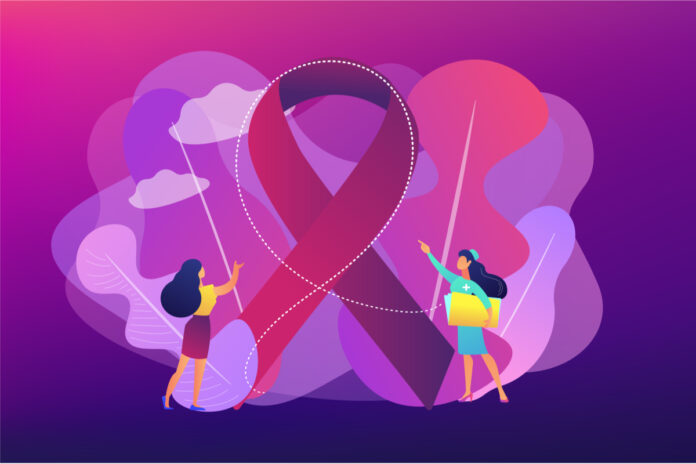A friend recently was diagnosed with cancer. When you first hear the “C word,” life suddenly changes. The diagnosis creates fear, confusion, uncertainty, and panic. My friend’s diagnosis led me down the Google path to learn everything I could about her condition. While I was on this road, I realized cancer is much more than a disease. It’s an industry.
According to the National Cancer Institute, roughly 1.8 million people are diagnosed with cancer in the United States each year. The related numbers aren’t all that encouraging. It is estimated 606,880 people in the U.S. will die of cancer this year. That’s about one third of those with the disease. When people are desperate to find solutions, they are highly susceptible to marketing messages.
In many other business sectors, marketing communications follow a traditional route: You first convince people there is a problem, and then you put forth how your product or service provides a unique solution.
However, when you are marketing to people with cancer or other serious healthcare concerns, they already know what the problem is. Marketers can zip directly to the “solution” part of the message.
Science Direct states when marketing cancer care the target audience is especially vulnerable, so marketers should follow ethical guidelines and be fair and balanced. Furthermore, the organization recommends “exaggeration of claims should be avoided.”
I unequivocally can state having more hope is not most patients’ number one goal. They seek accurate information.
Not only is the audience especially vulnerable because of fears and anxiety related to their diagnosis, but patients often also will find the bombardment of information conflicting and contradictory.
While the goal of most marketing communications is to provide compelling information that leads a consumer toward making a single, logical purchasing decision, healthcare marketing operates differently. Marketing healthcare services puts consumers in a position where their decisions literally can mean the difference between life and death. For cancer patients, the choices often are bewildering: Should I choose surgery or radiation? Chemotherapy or natural approaches?
Moreover, virtually everyone you speak with will offer a different opinion. Ask a surgeon, and they’ll recommend surgery. Ask an oncologist, and they’ll recommend chemo. Accordingly, even after consulting experts and reading everything possible on the subject, patients often are left with even more confusion than when their journey began.
The winner in the competition can be rewarded handsomely. Spending on healthcare marketing is at least $30 billion a year, according to a study published in the Journal of the American Medical Association.
And who do you think pays for all these glossy messages? You do.
“Marketing drives treatments,” said Steven Woloshin, the study co-author and co-director at the Center for Medicine and Media at the Dartmouth Institute for Health Policy and Clinical Practice. “It’s a big part of why healthcare is so expensive.”
Shannon Brownlee, senior vice president for the Lown Institute, a Brookline, Massachusetts, nonprofit that advocates for affordable care, said, “marketing is built into the cost of care.”
Today, several large advertising agencies specialize in healthcare marketing. On one of the largest agency’s websites, it boasts in big letters: “Attract More Patients Today… Let us help you market your cancer center or oncology/hematology practice to attract more patients and give hope to more people.”
Excuse me? Marketing to “give hope to more people?”
I unequivocally can state having more hope is not most patients’ number one goal. They seek accurate information.
The competition for cancer patients is fierce. Universities, hospitals, and clinics pour tons of money into convincing patients they will be treated best at their facility, either due to some exotic piece of technology the institution has purchased or because of their overall approach to cancer care.
For instance, Envita cancer center says it “provide(s) patients that did not find success or hope at other major cancer centers or smaller clinics…a new opportunity at life.” Cancer Treatment Centers of America says it “treat(s) you as an individual with your own hopes, needs, diagnosis, and goals.”
Yeah… I want that one.
Meanwhile the cost of cancer treatment in the United States continues to skyrocket. It’s gotten so bad GoFundMe has special tips to help people with cancer beg for their lives from strangers on the internet.
This column doesn’t delve into other forms of healthcare marketing such as the astonishing number of ads from pharmaceutical companies. Consumer advocates say patients pay the real price, as seductive ads persuade doctors and patients alike to order pricey tests and brand-name pills.
Unfortunately, I cannot wrap all this up into a single, pithy summary. The unsatisfying conclusion is having cancer sucks, and the glacier of healthcare marketing ads, claims, and counterclaims only muck it up even more.
 Randall Huft is president and creative director at Innovation Agency, an advertising, branding, and public relations firm specializing in the cannabis industry. While working with blue-chip companies including AT&T, United Airlines, IBM, Walgreens, American Express, Toyota, and Disney, he discovered what works, what doesn’t, and how to gain market share.
Randall Huft is president and creative director at Innovation Agency, an advertising, branding, and public relations firm specializing in the cannabis industry. While working with blue-chip companies including AT&T, United Airlines, IBM, Walgreens, American Express, Toyota, and Disney, he discovered what works, what doesn’t, and how to gain market share.














[…] power of plants for specific experiences. Terpenes from cannabis have the potential to help produce anticancer drugs, reverse the effects of some diseases, and prevent heart […]